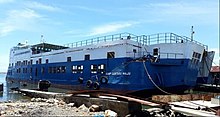
MS Herald of Free Enterprise was a roll-on/roll-off (RORO) ferry which capsized moments after leaving the Belgian port of Zeebrugge on the night of 6 March 1987, killing 193 passengers and crew.

Capsizing or keeling over occurs when a boat or ship is rolled on its side or further by wave action, instability or wind force beyond the angle of positive static stability or it is upside down in the water. The act of recovering a vessel from a capsize is called righting. Capsize may result from broaching, knockdown, loss of stability due to cargo shifting or flooding, or in high speed boats, from turning too fast.
MV Princess Victoria was one of the earliest roll-on/roll-off ferries. Completed in 1947, she operated from Stranraer, Scotland, to Larne, Northern Ireland, initially by the London, Midland and Scottish Railway (LMS) until 1 January 1948 and thereafter by LMS's successor British Railways. During a severe European windstorm on 31 January 1953, she sank in the North Channel with the loss of 135 lives. This was then the deadliest maritime disaster in United Kingdom waters since World War II. For many years it was believed that 133 people had lost their lives in the disaster. However, research by a local historian, Liam Kelly, identified two other victims—Gordon Wright and Thomas Saunders—who had not been identified as there had been no passenger list at the time.

The MS al-Salam Boccaccio 98 was an Egyptian Ro/Ro passenger ferry, operated by El Salam Maritime Transport, that sank on 3 February 2006 in the Red Sea en route from Duba, Saudi Arabia, to Safaga in southern Egypt.

The MV Senopati Nusantara was an Indonesian ferry that sank in a storm on December 30, 2006. The Japanese-made ship was a scheduled passenger liner from the port of Kumai in Central Kalimantan (Borneo) to Tanjung Emas port in Semarang, Central Java. About 40 km (25 mi) off Mandalika Island, the ship sank during a violent storm in the Java Sea. At least 400–500 people are thought to have drowned.
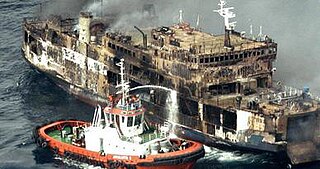
The Levina 1 was an Indonesian passenger ferry. On 22 February 2007, it caught fire, killing at least 51 people. Three days later, on 25 February, it sank with a group of journalists and investigators on board, killing at least one more and leaving three missing.
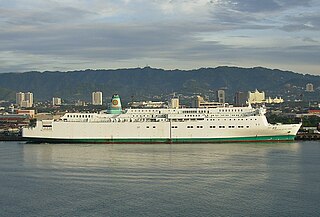
MV Princess of the Stars was a passenger ferry owned by Filipino shipping company Sulpicio Lines, that capsized and sank on June 21, 2008, off the coast of San Fernando, Romblon, at the height of Typhoon Fengshen, which passed directly over Romblon as a Category 2 storm. 814 people died.

The MV Princess of the Orient was a passenger ferry owned by Sulpicio Lines that sank off Fortune Island, near the provinces of Cavite and Batangas in the island of Luzon, The Philippines on September 18, 1998. The ship was originally built in Japan as Sun Flower 11 in 1974 where she served as a cruise ferry before being sold to Sulpicio Lines in 1993.

The sinking of MV Teratai Prima occurred on 11 January 2009, around 04:00 local time when a ferry carrying more than 300 people capsized in the Makassar Strait off West Sulawesi, Survivors stated that the ferry had been slammed by 4-metre (13 ft) waves twice. The first one hit so hard that the ship became unbalanced, before another wave hit from a different direction and sank the vessel.

The sinking of MV Dumai Express 10 occurred on the morning of 22 November 2009 when a ferry carrying more than 300 people sank near the island of Iyu Kecil in Karimun Regency, Riau Islands during bad weather. Eyewitnesses reported that massive waves had struck the ferry repeatedly, causing the starboard side of the ship to crack. Subsequently, a considerable amount of water poured into the deck. By 9:55 a.m. the ferry was fully submerged.
MV St. Thomas Aquinas was a Philippine-registered passenger ferry operated by 2GO Travel. On 16 August 2013, the vessel collided with a cargo ship named MV Sulpicio Express Siete of Philippine Span Asia Carrier Corporation and sank. As of 3 September 2013, there were 108 dead and 29 missing with 733 rescued as a result of the accident.

KMP Tampomas II was a roll on-roll off car and passenger ferry owned by the Indonesian shipping company Pelni that burned and sank in the Java Sea while sailing from Jakarta to Ujung Pandang, South Sulawesi on 27 January 1981. This disaster resulted in the deaths of hundreds of passengers.
MV Sinar Bangun sank on 18 June 2018 in Lake Toba, North Sumatra, Indonesia, during its trip from Simanindo Harbour in Samosir Island to Tiga Ras Harbour in Simalungun Regency. The ferry was carrying 188 passengers and crew. After the sinking, authorities immediately deployed search and rescue personnel to the area. Twenty-one survivors were rescued, three bodies were found and 164 people were listed as missing and presumed dead.

The sinking of MV Marina Baru 2B occurred just after noon on 19 December 2015. The high speed vessel carrying 112 passengers and crew sank off the coast of Bone, South Sulawesi in inclement weather conditions. A nine-day search and rescue operation, conducted by authorities, successfully rescued 45 survivors and recovered 65 bodies from the sea. Twelve people were declared missing and presumed dead.

The sinking of MV Wahai Star occurred on the night of 10 July 2007, when a speedboat tugged by the ferry accidentally crashed into its stern, resulting in a major leak. In the following days, rescuers managed to save 43 people, while 16 bodies were recovered in the nearby waters.
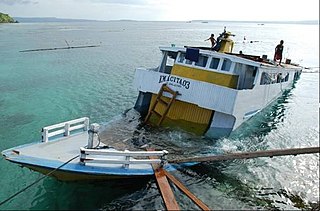
The sinking of MV Acita 03 occurred on the night of 18 October 2007 when a ferry carrying 174 passengers and crews accidentally capsized during its docking in Baubau, Southeast Sulawesi. 134 passengers and crews survived the disaster while 30 passengers and 1 crew member lost their lives. 9 people were listed as missing and presumed dead.
MV Nusa Kenari 02 was an Indonesian passenger boat which sank off Alor on 15 June 2019. At least three people was killed due to the sinking, with four further missing out of the 52 passengers and crew aboard the vessel.

The Zahro Express disaster occurred on the morning of 1 January 2017 when an Indonesian-flagged wooden passenger vessel caught fire in the waters of Thousands Islands Regency, off the coast of Jakarta. She was travelling from Jakarta's Muara Angke to Tidung Island, a popular tourist destination. The ferry, named MV Zahro Express, was carrying 216 passengers and 5 crew members. Of the 221 passengers and crews, a total of 24 people on board lost their lives.
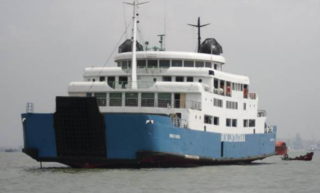
MV. Windu Karsa was an Indonesian-flagged double-ended RO/RO ferry that served the route from Luwu, South Sulawesi to Kolaka, Southeast Sulawesi. Built in Fujiwara Shipyard in 1980, she has served in Indonesia for more than 20 years.


